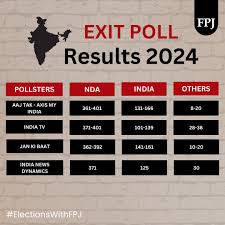The 2025 Lok Sabha elections are shaping up to be one of the most closely watched and competitive political contests in recent years. Here’s an overview of the key predictions and factors that could influence the outcome:
1. Political Landscape and Key Players
- Bharatiya Janata Party (BJP) is expected to continue its stronghold, banking on its previous electoral successes, strong leadership, and focus on national security and development.
- The Indian National Congress (INC) and various opposition alliances are working to regain ground by uniting regional parties and focusing on issues like inflation, unemployment, and farmers’ distress.
- Emerging regional parties and alliances, including newer players like the Jan Suraaj Party led by Prashant Kishor, may disrupt traditional vote banks.
2. Major Issues Influencing Voters
- Economy and Employment: Post-pandemic economic recovery, job creation, and inflation control remain top voter concerns.
- Agriculture and Rural Development: Farmers’ welfare and rural infrastructure are pivotal, especially in key states like Punjab, Haryana, and Uttar Pradesh.
- National Security: Ongoing border tensions and defense policies influence voter sentiment, particularly in border states.
- Social Welfare: Programs targeting education, health, and social equity will impact voter loyalty.
3. Regional Dynamics
- States like Uttar Pradesh, Bihar, Maharashtra, and Tamil Nadu will play decisive roles due to their large seat counts and complex political alliances.
- In Bihar, the Jan Suraaj Party is emerging as a new force, potentially affecting the fortunes of established parties.
- Southern states may see a tussle between national parties and strong regional parties like DMK and AIADMK.
4. Predicted Outcomes
- The BJP-led NDA alliance is projected to retain power but might face a reduced majority due to stronger opposition coalitions.
- Opposition parties could gain seats by capitalizing on local issues and anti-incumbency sentiments.
- The election could witness increased voter turnout, especially among youth, influenced by social media campaigns and digital outreach.
5. Uncertainties and Wildcards
- The impact of new technologies like AI in election campaigning and voter mobilization.
- Sudden political realignments or alliances closer to the election date.
- The role of independent candidates and smaller parties in coalition formations.
Conclusion
While the BJP is currently favored to lead the government post-2025 elections, the evolving political alliances, voter concerns, and regional dynamics make the results unpredictable. The upcoming months will be critical as parties ramp up their campaigns and alliances solidify.
































































